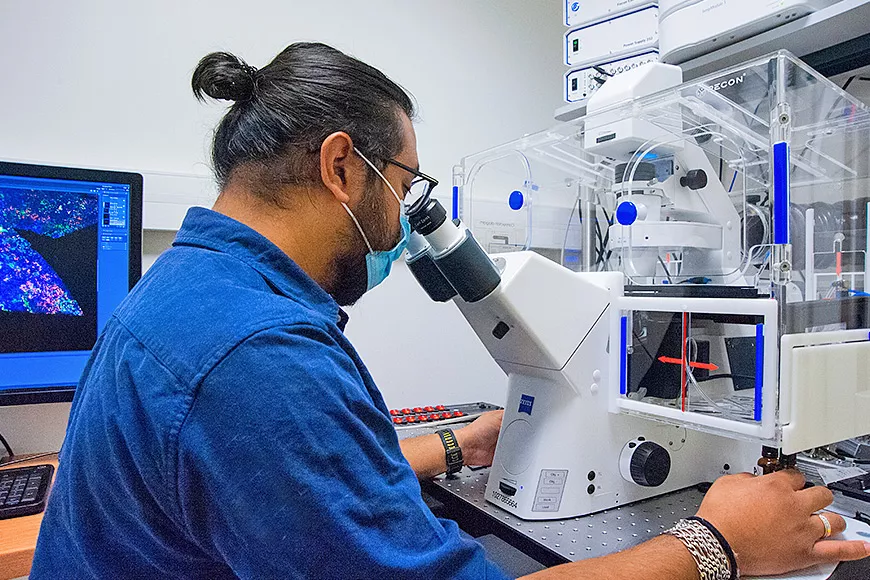Contacts for the visually impaired
Caring for people with impaired vision is multidisciplinary. The primary contacts are ophthalmologists, orthoptists and opticians, but many other health professionals provide support to people with vision loss.

The ophthalmologist can make a diagnosis and plan a treatment. He or she is often the first point of contact that the visually impaired person encounters. When the diagnosis is made, treatments may sometimes be proposed.
He performs a complete ophthalmological check-up including several evaluations of visual and anatomical functions.
The orthoptist makes it possible to optimize the use of the residual vision of the visually impaired person.
He or she implements strategies to excentricate the gaze and improve the fluidity of eye movements, with or without optical aids.
The mission of the optician specialising in low vision is to advise on existing aids for character enlargement or protection against glare.
He or she carries out an assessment to find the need for magnification of the visually impaired person, or the intensity of the filter required. The choice of the right optical aid will be made according to their needs.
The occupational therapist allows the patient to learn to compensate for the visual impairment with other senses and/or strategies, adapt technical aids to the person and learn how to use them (adapted software, etc.) Rehabilitation is the process of reducing a person's disabilities.
He or she helps patients by carrying out manual activities (basketry, pottery), memorisation, visual scanning of the scene, taking reference points, etc.
The locomotion instructor teaches compensatory techniques to help the visually impaired person get around in order to stimulate remaining visual capacity, encourage the development of the other senses to use tactile and olfactory cues, etc., encourage orientation, mental representation, memory, concentration, logical deduction, etc. and learn how to use urban features to optimise movement.
He helps to teach patients various techniques: protection techniques, guide techniques, cane techniques, etc. They learn to move around indoors, outdoors, on public transport, in supermarkets, etc., to work on models and plans to help memorize a place and to learn how to ask for help from a third person.

The mission of a psychomotor therapist
or an occupational therapist is to make the person aware of his or her abilities and help him or her develop them in everyday life situations. The therapist finds practical solutions by setting up reference points, organising things, etc. And it allows patient to regain efficiency, safety, comfort, self-confidence, the taste and pleasure of doing the activities before, but differently.
The psychomotor therapist or occupational therapist works with the patient to carry out daily tasks (eating, serving a glass of water, gardening, managing money, etc.).
